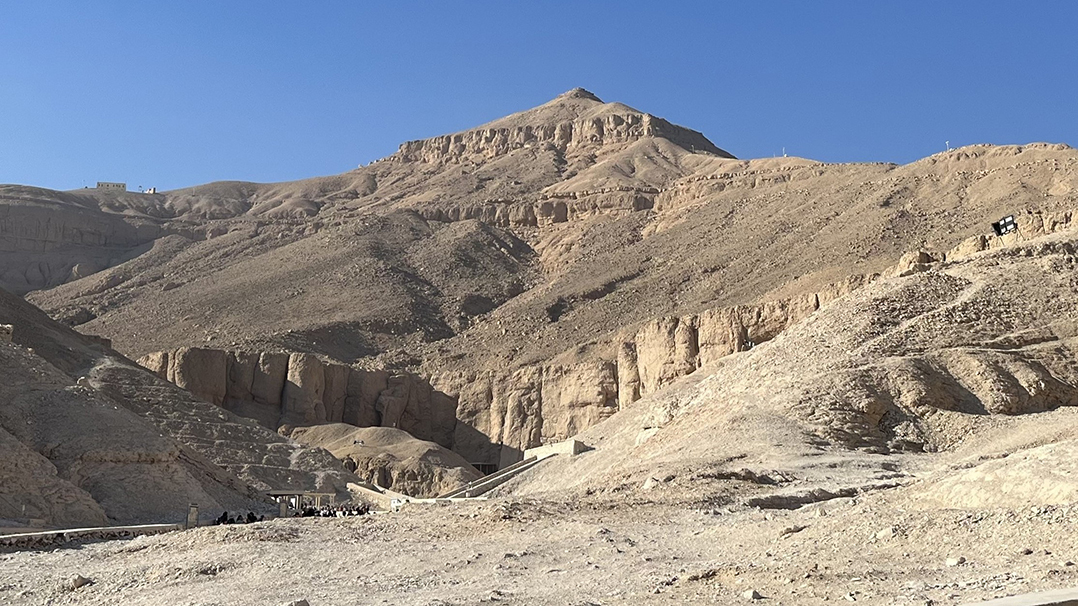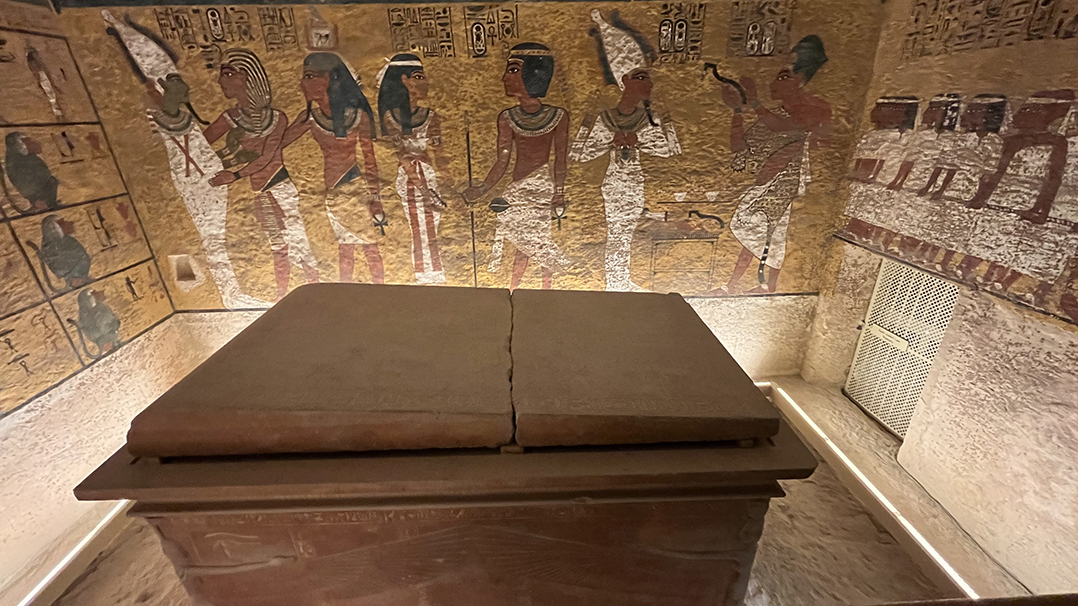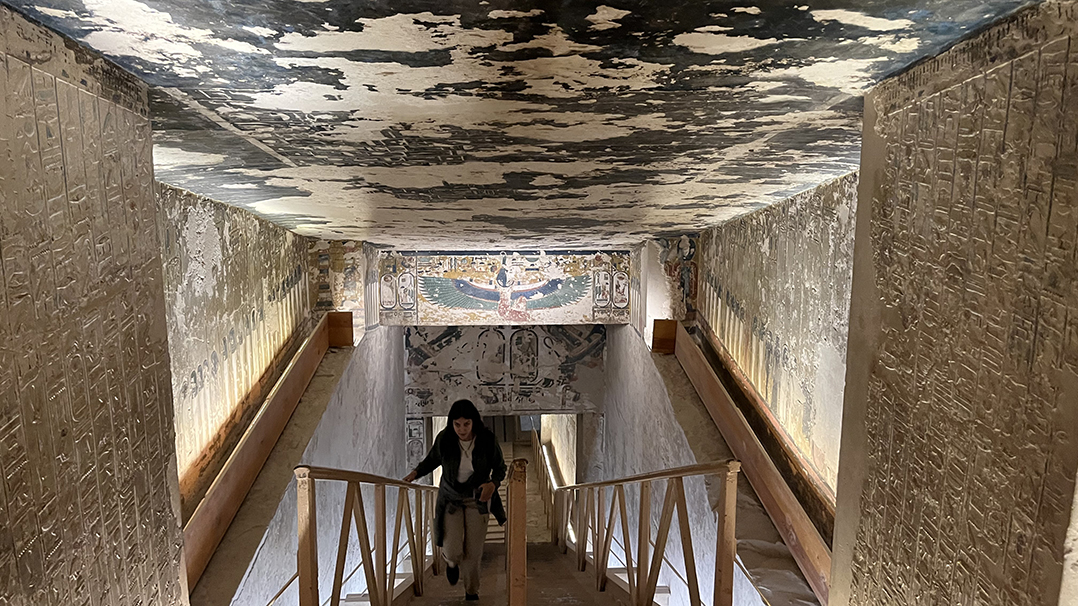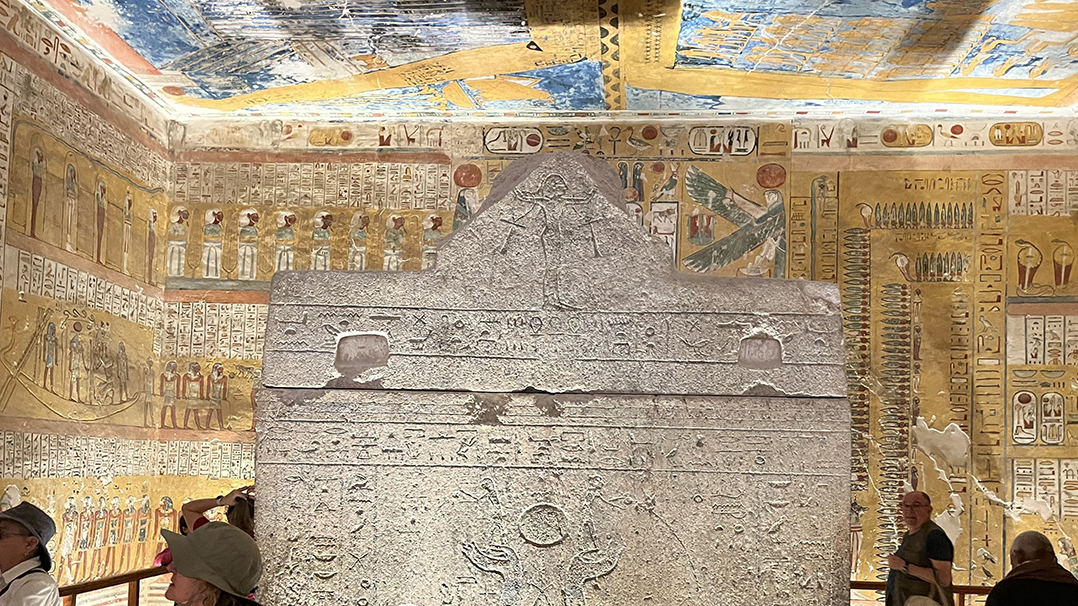In our continuing tour of Egypt, we visit the Valley of the Kings, containing at least 65 royal tombs, including that of Tutankhamen.
By about 1500 B.C., Egyptians had either forgotten how to build pyramids or had concluded that they were too easy to rob. So, they began burying the pharaohs and their families, along with other important Egyptians, in a valley on the west bank of the Nile River near the modern city of Luxor, called Thebes by ancient Egyptians. The site was apparently selected because of the large pyramid-shaped rock overlooking the valley. The area’s soft limestone allowed workers to dig sloping shafts extending hundreds of feet to underground burial chambers enclosing a giant stone sarcophagus. Along all the walls and ceilings, artisans painted scenes of the pharaoh’s life and life with the gods, some intended to give the pharaoh help with questions asked at the final judgment. The pharaoh’s earthly possessions were buried with him (or her) for later use if, as expected, he survived that judgment.
To prevent looting, the entrances to the tombs were scattered and concealed behind tons of limestone. But the camouflage did not work, and the tombs were systematically raided. Raiders eventually found and looted all but the tomb of Tutankhamen, who had died at age 19 after a very short reign. Tutankhamen’s small tomb, discovered in 1922, included both the king’s mummy and about 3,500 items of gold and other rich materials.
Only about 20 of the tombs in the Valley of the Kings held mummies of pharaohs. Today, about 18 tombs are open to the public on a rotating basis. The finest is the elaborately decorated tomb of Pharaoh Seti I. The most popular tomb is that of King Tut, which, unlike all the others, includes his mummy.








